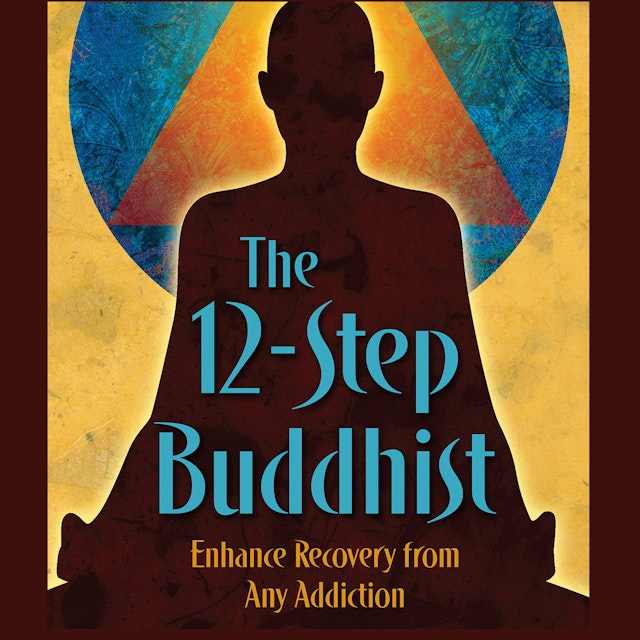Addiction and Trauma: A Basis for the Practice of Recovery
The Dysregulated Addict: Finding Spiritual Regulation Series Pt. 6
The 12-Step Buddhist Podcast Episode 101
Review of this series so far.
**Understanding ACEs:**
- **Definition and Types:** Physical abuse, emotional scars, a home where chaos reigns. These are ACEs, wounds that shape us, echoes of the storms we explored in the nervous system. They are the unseen baggage we carry, the ghosts that haunt our minds.
- **Prevalence:** You're not alone. Millions bear these scars, these memories that refuse to fade. They linger, affecting our health, our relationships, our very essence, adding to the allostatic load we discussed earlier.
**The Neurobiology of ACEs:**
- **Brain Structure and Function:** Imagine your brain, a delicate machine, wired for love, trust, joy. Now imagine it altered, scarred by trauma. The prefrontal cortex, the seat of reason, impaired. The hippocampus, the keeper of memories, wounded. It's not just science; it's a tragedy played out in the very fabric of our being.
- **Stress Response System:** A child in constant fear, a body always ready to fight or flee. The stress hormones flood, the balance is lost, and the dance becomes a battle. It's the window of tolerance, shattered and fragmented. It's not just biology; it's a daily struggle for peace, for normality.
**ACEs and the Path to Addiction:**
- **Increased Vulnerability:** The path from ACEs to addiction is not a straight line; it's a twisted road, filled with pitfalls and traps. The brain changes, the balance tips, and the allure of substances becomes a siren's call. It's the allostatic load, heavy and burdensome, leading us astray.
- **Compounding Damage:** Addiction is not a choice; it's a compounding of pain, a response to a brain altered by ACEs. It's a cycle, a whirlpool that pulls you in, deeper and deeper, beyond the window of tolerance, into the abyss.
**The Science of ACEs and Addiction:**
- **Neurotransmitters and Addiction:** Dopamine, serotonin, words that sound distant, but they are the music of our minds. ACEs disrupt this music, turning harmony into discord. It's not just chemistry; it's the melody of our moods, our desires, our very selves.
- **Brain Regions Affected:** The amygdala, the nucleus accumbens, names that might seem foreign, but they are the chambers of our fears, our pleasures. ACEs invade these chambers, altering our responses, shaping our addictions. It's not just anatomy; it's the architecture of our emotions, our cravings.
**Mindfulness and Neuroplasticity:**
ACEs and addiction are not just emotional scars; they leave tangible marks on the brain, altering its very structure and function. The effects are profound, affecting critical regions like the prefrontal cortex and amygdala.
-
**Specific Mindfulness Techniques for Recovery:**
Mindfulness is not a one-size-fits-all approach; it's a diverse and adaptable set of practices, each with unique benefits and applications. For those on the path of recovery from ACEs and addiction, these techniques offer targeted healing, addressing specific aspects of the brain, mind, and body.
- **Mindful Breathing:** A foundational practice, mindful breathing focuses on the breath as an anchor to the present moment. It can calm the sympathetic nervous system, reduce anxiety, and enhance focus. For those with ACEs and addiction, it's a way to find stability, grounding, and presence.
- **Body Scan Meditation:** This practice involves systematically bringing attention to different parts of the body. It can increase body awareness, reduce stress, and promote relaxation. For those affected by ACEs and addiction, it's a path to reconnecting with the body, healing the disconnection often caused by trauma and addiction.
- **Loving-Kindness Meditation:** Focusing on cultivating compassion for oneself and others, loving-kindness meditation can enhance empathy, self-compassion, and emotional well-being. It's a balm for the emotional wounds of ACEs and addiction, a way to nurture the heart and soul.
- **Mindful Movement Practices (e.g., Yoga, Tai Chi):** These practices combine movement with mindfulness, promoting physical health, flexibility, and balance. They can be particularly healing for those with ACEs and addiction, addressing the physical toll of addiction and enhancing the mind-body connection.
- **Mindfulness-Based Cognitive Therapy (MBCT):** MBCT integrates mindfulness practices with cognitive therapy, targeting patterns of thinking that can lead to depression and relapse. It's a targeted approach for those with ACEs and addiction, addressing the cognitive challenges and patterns that often accompany these experiences.
- **The Personalized Path of Mindfulness:** The journey of mindfulness is a personalized one, guided by individual needs, challenges, and goals. For those on the path of recovery from ACEs and addiction, these techniques offer a tailored approach, a way to heal the specific wounds, restore balance, and reclaim life. It's a promise of transformation, a promise grounded in practice, illuminated by hope.
The 12-Step Buddhist Podcast näytetään tässä palvelussa avoimen RSS-syötteen kautta. RSS-syötteen tiedostot, kuvaukset, kansikuvat ja muu metadata ovat podcastin omistajan omaisuutta, eivätkä ole yhteydessä Podplayn kanssa.
